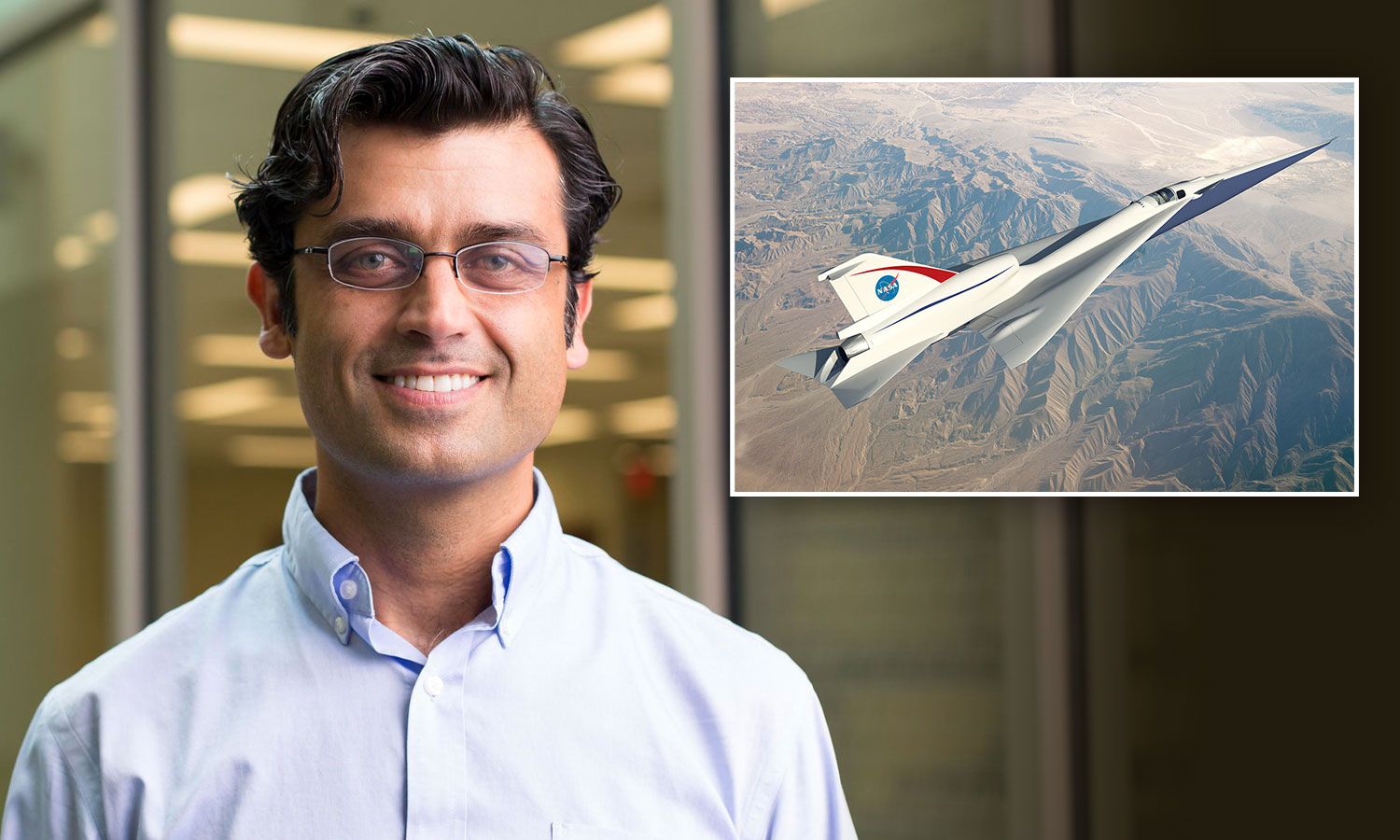When an aircraft traveling 3,000 mph hits even a tiny particle, the impact is significant. New research by Ibrahim Guven, Ph.D., associate professor in the Department of Mechanical and Nuclear Engineering, will help determine just how significant those high-speed encounters can be.
With $450,000 from the U.S. Department of Defense’s Office of Naval Research, Guven is analyzing how rain, ice, sand, dust, volcanic ash, aerosols and other particles impact surfaces of hypersonic aircraft. This research will aid in the development of new, advanced materials for building vehicles traveling more than five times the speed of sound.
At these velocities, the impact of a small particle can alter aerodynamics because the stability of an aircraft is related to how air is moving around the surface, Guven said. Disturb the surface, and the flow field changes. This can create friction pockets that get too hot, or even cause a structural asymmetry that alters the flight dynamics of the vehicle.
Both situations get worse over time. Guven likened the process to a pebble hitting a windshield.
“It’s happened to all of us, right? A tiny pebble hits it and now you have a little chip. Later, on a hot summer day, you hear the cracking noise. You let it go, but it just gets bigger,” he said. “A similar mechanism is at play [with hypersonic vehicles], but with a much shorter time frame. You don't have a couple of seasons, or a couple of years [to address it].”
To help engineers plan for these impacts, Guven and his team will develop a general purpose, computational framework to gain insights on the mechanics of growing cracks. This framework will offer a streamlined way to model the spread of multiple dynamic fractures, without the need for additional equations.
The team will be working with a Sandia National Laboratory analysis code whose developer has a working relationship with Guven’s lab.
Students will play a large role in this research, Guven said, adding that this project offers M.S. and Ph.D. students an opportunity to delve into both solid and fluid mechanics, as well as shock physics. He is currently recruiting graduate students for this work.
“This problem of hypersonic flight is at the leading edge of aerospace research,” Guven said. “It will only get hotter and hotter — it’s not going anywhere. It will not only affect the defense industry but also the private aerospace industry. There is a lot of opportunity here.”
Guven’s Computational Multiscale Mechanics Lab
A graduate student perspective
Forrest Baber (B.S.’15, Ph.D.’20), a newly minted research engineer with GE Global Research, completed his doctorate under Guven last year. Baber worked with Guven to develop simulation strategies for modeling failure and fracture of advanced materials, which helped lay the groundwork for the new grant.
“[Dr. Guven] gave me the freedom to take a research project and run with it,” Baber said. “He would say, ‘Here’s what’s been done in the past. Based on your skill sets now, how do you think you can move this project along?’ The project I was working on was sponsored by Boeing and the [U.S.] Air Force, but there were also projects with NASA and now there’s his new project with ONR [Office of Naval Research]. I knew as a grad student that I was contributing to something greater than just a research project at VCU. It was really a partnership with outside agencies, as well.”
